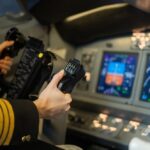Flying taxis are exciting. Innovators for this futuristic transport tech are inspired by bold visions of taking traffic to the third dimension. But first overcoming a complex landscape of certifications and legislation must be addressed before urban air mobility (UAM) can take flight. Harmonization has the power to help them soar.
The global UAM market is projected to grow from around $3bn in 2021 to almost $9bn by 2028. Right now, approximately 250 startups are active with 300 models in this industry. However, there is currently no global regulatory framework in place, and authorities like the FAA in the US or the EASA in Europe are still evolving their safety standards and certification requirements. These rules will cover considerations such as safety tests, design specifications, emissions, noise, emergency procedures, airspace traffic management, aircraft maintenance and more. And every aircraft design must meet all these strict regulations – or else they’ll have to stay grounded.
Reinventing urban transport doesn’t have to involve reinventing the wheel, however. Approved technologies from the aerospace and automotive industries can accelerate validation for UAM aircraft designs. These solutions are already known and certified by safety authorities worldwide.
This opens potential for faster go-to-market times because the solutions have already been examined and rubber stamped. Businesses that take advantage of this harmonization effect can grab a competitive advantage as the market for affordable, emissions-free flying unfurls its wings.
Innovative adhesives, epoxies, sealants, coatings and assembly films that are already approved for the aerospace, automotive or electronics industries are powerful examples. These technologies meet strict requirements for safety and quality in applications including structural bonding for substrates like lightweight composites, as well as potting, thermal gap filling and windshield bonding. Certified solutions can help boost aerodynamics, vibration damping and corrosion protection. And they enable flexible design possibilities for electric vertical take-off and landing (eVTOL) aircraft – with a shorter waiting time for the regulator’s green light.
Henkel is the global leader for adhesives, sealants and functional coatings across a huge range of industries and markets worldwide. Its teams are now working side by side with aircraft manufacturers to develop and validate UAM designs. The 146-year-old company shares its experience, commitment to quality through Nadcap certified aerospace solutions manufacturing facility in Montornès, Spain and knowledge to help flying vehicles meet tough regulations around the globe. In this way, Henkel’s products and expertise are making it possible for eVTOL vehicles to break free from the weight of regulatory expectations – and take off on their journey to an exciting future.
Visit the Henkel website for more info: Aerospace – Henkel Adhesives (henkel-adhesives.com)
Subscribe to the FINN weekly newsletter

